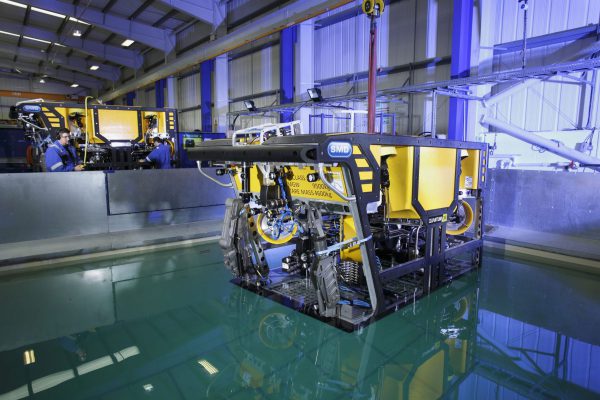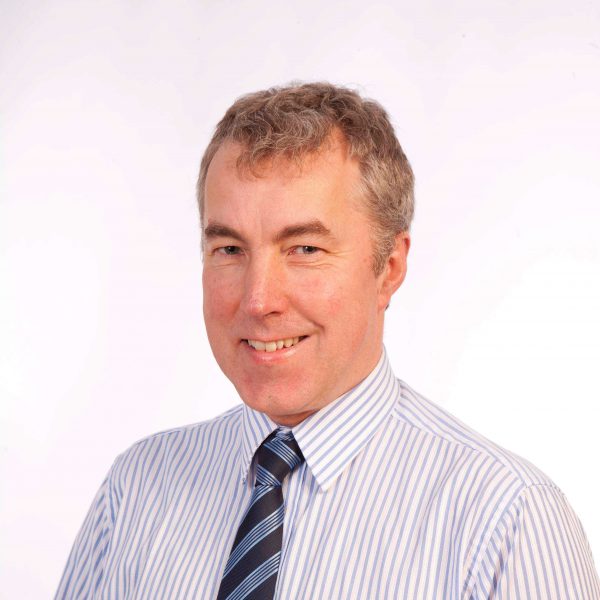Tell us a bit about yourself
My name is Paul Atkinson. I’m currently Technical Director at SMD and have been with the company for somewhere between 33 and 36 years, depending on when you start counting from! During my time at SMD, I have been involved in most aspects of the business and have been a company director since 1997.
I graduated from the department of Agricultural Engineering at Newcastle University where, at that time, SMD’s founder, Dr Alan Reece, was a senior lecturer and reader. It has to be said that for an Ag Eng student at Newcastle, Alan was much more than just a lecturer and was a huge inspiration, whether it was through his vivid accounts of loosely engineering related escapades, industrial visits to local engineering firms or the regular trips with him to one of the University Farms to demonstrate engineering principles first-hand.
For the first couple of years of my working career, I was a graduate engineer at Pearson Engineering, which was then a sister Company of SMD and partly owned by Alan as a result of his contribution to a management buyout. My experience at Pearsons, which included learning to drive tanks and spending many weeks in far flung places such as Pakistan and Taiwan, proved to be very valuable grounding for what I was about to experience at SMD.
What is the best part about working at SMD?
This is a really difficult question and I’m not sure I can pinpoint one specific thing as being the “best part”. The company itself is a bit like the equipment we build where the individual parts by themselves are impressive, but put them all together and you end up with something which is world class, high performing, unique and the best in the industry. Sorry if this sounds a bit cheesy, but if you can see past the cheese, I do believe it’s true!
If I had to choose, SMD’s people would be at the top of the list as they are fundamentally what makes the company a success and such a great place to work. Many people have come and gone during my thirty-something years at SMD and I have had the pleasure of working with some fantastic people, many of whom have gone on to join other engineering companies in the North East and some of whom also remain firm friends.
Next on the list has to be the products we build. As an agricultural engineering graduate, having grown up on a farm and being interested in engineering from an early age, the opportunity to be involved in the design of pioneering subsea trenching equipment was like a dream come true. Despite a few nightmares along the way, I can honestly say that the development and innovation work which we do now, to harness the latest technologies, is equally as inspiring as it was in the early days of SMD.
Company culture also has to feature on my list. Whilst the Company has evolved from being a spin-out from Newcastle University, through family ownership, private equity ownership and now corporate ownership, SMD’s culture has persisted throughout this evolution. I wish I knew how to define the “SMD Culture” and we have attempted many times to capture this, but those who work here, or have worked here, will know what it is!
Do you have a standout memorable moment?
It’s hard to choose one particular memorable moment as there have been so many - some good, some bad and some just vivid for other reasons! One such scene that sticks in my mind happened during a beach trial at Druridge Bay, which is a particularly nice beach off the coast of Northumberland…
In the early days of SMD, we tested many of our new trenching machines on this beach, mostly by dragging them through the sand using large Caterpillar tractors to assess their trenching performance. However, following the development of a new breed of subsea machine, the self-propelled trenching tractor, we decided that it would be a good idea if we could operate the machine whilst submerged in the sea to test the performance of the new water jet trenching system. So, the strategy was to wait for high tide, drive the tractor out to the low water mark and then start trenching. The philosophy here was that there was enough tidal range to fully submerge the tractor at high tide, but if things went wrong, it would be accessible again at low tide….
The tractor was successfully driven out to the low water mark and trenching began, however very soon after that, the tracks stopped working and the tractor ground to a halt. After much head scratching, the only option was to wait 6 hours for low tide to investigate what had happened. The tide duly receded and by around about midnight, most of the tractor was exposed. However, what we hadn’t accounted for was that the water jetting system had created a large area of quick sand around the stationary tractor and it had sunk to the top of its tracks. As time was pressing and the tide was on the turn, we broke out the shovels and spades and started to dig down to expose the failed o-ring, whose location was given away by the small oil slick directly above. The o-ring was then quickly repaired and we managed to drive the tractor out of the quick sand and back up the beach to safety. I can still remember the numbness in my fingers from wielding an allen key whilst wearing a dry suit in the chilly waters of the North Sea in January!
Unbeknown to the team, the low-light cameras on the tractor had remained switched on during the tractor recovery operation and even better, the VHS video recorders in the Control Cabin had been recording (I’m not at liberty to say who switched on the recorders…). The next day, after a bit of clever video editing, some fast forward footage was produced which showed the SMD team frantically digging in the sand and the boss at the time (you know who you are!) leaning on his shovel whilst supervising and to be fair, occasionally joining in the digging.
Beach trials at Druridge Bay were always a highlight, particularly as many of the dog-walkers and other passers-by were convinced that we were involved in preparations for a then much talked about North Eastern nuclear power station.



